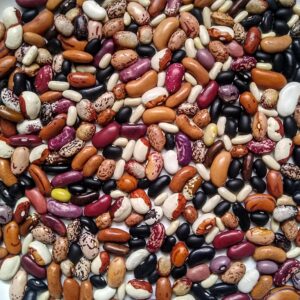
As many of you know, the majority of transgenic crops are in commodity crops – corn, soybeans, cotton, alfalfa. In recent months the news of genetic modification of Sugar Beets has been major news. Momma’s are worrying about their kids Snickers Bars, and table beet and Swiss Chard seed growers in the Northwest are worrying about their seed crops (more on that later this month).I heard word today that seed producers in the Willamette Valley of Oregon have been approached to grow cabbage seed for a BT cabbage variety.BT – Bacillus thuringiensis – is a bacteria that is naturally occurring in soil. When it sporulates produces a toxin that is particularly nasty towards moths and butterflys, as well as caterpillars, beattles, and a host of other critters. Because of this effect on insects, it has been used as an insecticide since 1920 in Europe, with large scale commercial use in the US increasing after World War II. It was considered a fairly mild natural insecticide, washed away by rain and degraded by sun. In fact it is approved for usage by the National Organic Program. Usage of BT in conventional systems jumped in the 1980s when insects began to show greater resistance to the synthetic chemicals that were being sprayed in absurd quantities (these insects have lived with these plants for thousands of years; I have no doubt they will out evolve and survive our chemicals. The damage from these synthetics hits those higher up the food chain – birds, fish, us). Well the seed companies got the idea of genetically engineering plants to produce their own BT – wouldn’t wash away in the rain or break down in the sun and you don’t even have to buy a new nozzle for your sprayer. They started with tobacco, but most famously, BT has been engineered into corn to prevent damage from the European Corn Borer.
Now into the Brassica vegetable crops to try and prevent damage from cabbage moths.
News of work on BT cabbage has been out for some time, with India and Pakistan tagged as the eventual market place for the crop. Here’s an article from 2005 from the Financial Express and from Seed Quest more recently. However, this is the first time that we have heard any word of this seed being produced in the US.
I will hold off on the ecological risks (such as Monarch populations) or human health risk – commentators may weigh in here – and focus my concerns towards the agricultural risk.
There are two primary risks.
The first is to the plant genetics of other brassica seeds crops. Oregon and Washington grow the vast majority of the US supply of brassica seeds (cabbage, kale, cauliflower, brussels sprouts, etc) and a very high percentage of the global supply. Brassicas are outcrosses, with wind the dominate mover of pollen. Growing BT cabbage seed in this area will expose both organic and conventional (non-gmo) seed crops to contamination that would make their products unmarketable. Specialty seed production such as brassica seed production, is a high value agricultural sector that requires investment and highly developed skills. Farm families in the Willamette and Skagit Valleys of Oregon and Washington have been growing seed here since the 1880s. Once again a few big gene giants are going to put farmers at risk from their contamination (as they are with beets – but more on that later).
The second risk is that the pests that are being targeted by these BT varieties will develop increasing resistance to BT. The organic producers who rely on BT will lose one of their major tools for controlling moths in their brassica crops. More on the potential for building resistance in this great interview from Biosafenet, an EU-funded network of European scientists working in the field of GMO biosafety research.
I’ll keep you updated as I learn more about BT cabbage seed production in the US, and promise a RoundUp Ready Beet article very soon.
